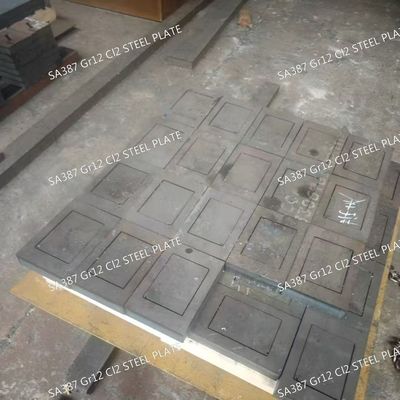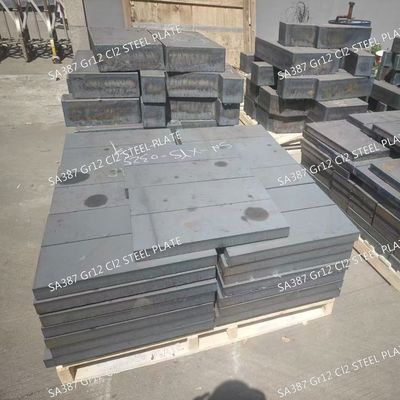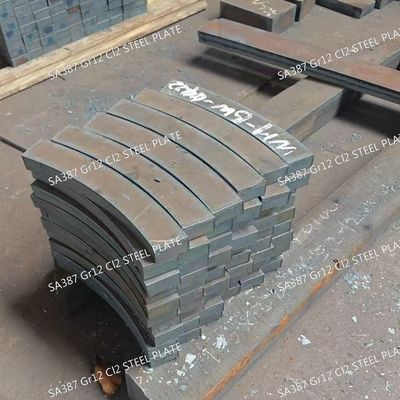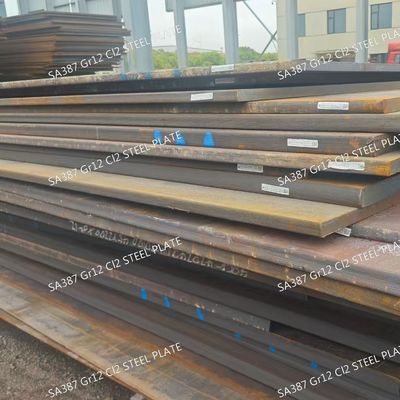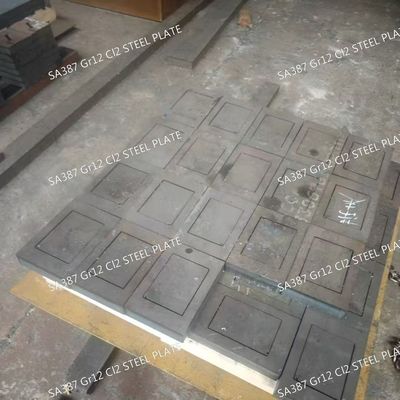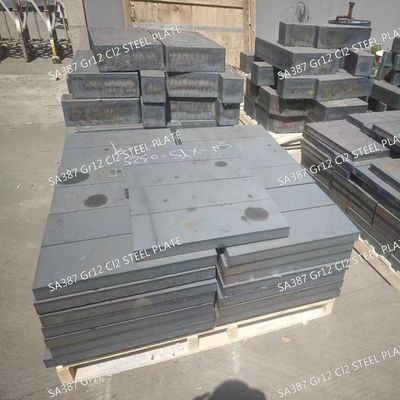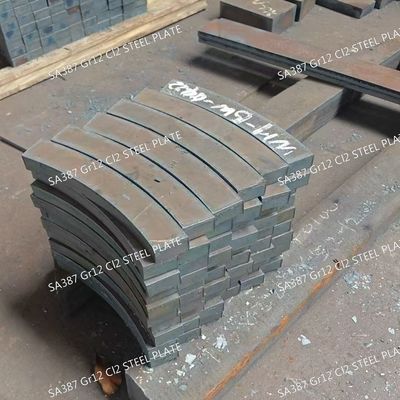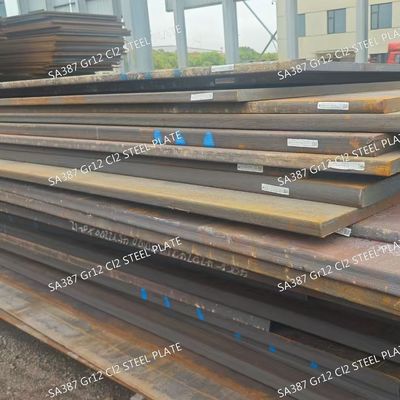All Products
-
 Raian IonescuMaterial quality very good. we have cooperate more than 10 Years. They trade lots kinds of steel material. All material quality good. They duty for all material quality. We are planing continue cooperate with them in the future
Raian IonescuMaterial quality very good. we have cooperate more than 10 Years. They trade lots kinds of steel material. All material quality good. They duty for all material quality. We are planing continue cooperate with them in the future
ASME SA387 Gr 2 Cl 2 Alloy Steel Plates Precision Engineered For Industrial
| Place of Origin | China |
|---|---|
| Brand Name | BAOSTEEL BENSTEEL HBIS XINGCHENG |
| Certification | ISO 9001 |
| Model Number | SA387 GR12 CL2 |
| Minimum Order Quantity | 10 kgs |
| Price | 540 - 890 USD/Ton |
| Packaging Details | standard packing for export |
| Delivery Time | 5 - 12 days based on the quantity |
| Payment Terms | L/C, T/T, Western Union |
| Supply Ability | 20Ton per week |

Contact me for free samples and coupons.
Whatsapp:0086 18588475571
Wechat: 0086 18588475571
Skype: sales10@aixton.com
If you have any concern, we provide 24-hour online help.
xProduct Details
| Products | SA387 GR12 CL2 | Thickness | 3.0 - 200.0mm |
|---|---|---|---|
| Width | 1000-2200mm | Length | 2000-12000mm |
| Standard | ASTM EN GB | Other Material | Carbon Steel, Alloy Steel, Stainless Steel |
| Brand | BAOSTEEL XINYU XINGCHENG HBIS | Service | Cutting |
| Highlight | Precision Engineered Steel Plates,Industrial Steel Plates |
||
Product Description
ASME SA387 Gr.2 Cl.2 Alloy Steel Plates Precision Engineered for Industrial Applications
Products Specification
| Product Name | SA387 GR12 CL2 Steel Plate |
| Thickness | 3mm~300mm,2mm-100mm is common thickness,also can customize |
| Width | 1000~3000mm,common width is 1250mm,1500mm,2000mm,2200mm |
| Length | 1000~12000mm,can as your request cut |
| Surface | Clean,finished, blasting and painting or as your request |
| Delivery | Hot Rolled, Controlled Rolling,Normalizing,Annealing, Tempering,Quanching, Q+T |
| Packing | Steel Strapping,fixing in the Container,can customize |
| Thickness tolerance | ±0.3mm |
| Application | It is mainly used to make structural parts such as car girder, beam, transmission shaft and car chassis parts, which can reduce the weight of the parts. |
SA387 GR12 CL2 Alloy Steel Plate Product Information
1. Introduction
SA387 GR12 CL2 alloy steel plate stands as a paragon of engineered excellence in the realm of industrial materials. Governed by the ASME SA - 387/SA - 387M standard, this specialized alloy steel plate, with its unique chromium - molybdenum composition, is meticulously crafted to meet the most exacting demands of high - stress, high - temperature industrial applications.
2. Key Advantages
2.1 Exceptional Thermal Stability
SA387 GR12 CL2 excels in withstanding extreme heat, maintaining its structural integrity and mechanical performance even when exposed to continuous service temperatures up to 480°C. This remarkable thermal stability makes it an ideal choice for components in high - temperature furnaces, where other materials might succumb to creep and degradation over time.
2.2 Superior Corrosion Protection
Against a variety of aggressive chemicals and environmental factors, this alloy steel plate demonstrates outstanding resistance. It effectively combats hydrogen - induced corrosion, a common and damaging issue in petrochemical processes, as well as sulfide - related corrosion that can occur in environments with sulfur - containing substances. This protection extends the lifespan of equipment and reduces maintenance costs significantly.
2.3 Robust Mechanical Attributes
With a tensile strength ranging from 450 - 585 MPa, SA387 GR12 CL2 can bear heavy loads without failure. Its minimum yield strength of 275 MPa ensures that it can resist deformation under pressure, safeguarding the reliability of structures and machinery. Additionally, its impact resistance, capable of withstanding at least 41 J of impact energy, provides an extra layer of safety, enabling it to endure sudden shocks and vibrations.
3. Chemical Makeup
The chemical composition of SA387 GR12 CL2 is a precisely calibrated blend:
- Carbon (C): Ranging from 0.04 - 0.17%, carbon plays a pivotal role in determining the steel's hardenability and strength. The optimized content in this alloy strikes a perfect balance between enhancing mechanical properties and maintaining workability.
- Silicon (Si): At 0.13 - 0.45%, silicon contributes to deoxidizing the steel during production, improving its purity and also enhancing its strength and resistance to oxidation at elevated temperatures.
- Manganese (Mn): With a content of 0.35 - 0.73%, manganese boosts the steel's hardenability and improves its overall strength and toughness, making it more adaptable to various manufacturing processes.
- Phosphorus (P): Limited to ≤0.035%, phosphorus is carefully controlled as an impurity. Keeping its levels low prevents brittleness and ensures good formability during cold - working operations.
- Sulfur (S): Similarly, sulfur, with a maximum content of ≤0.035%, is minimized to avoid issues like hot - shortness during hot - working and to improve the overall quality and performance of the steel.
- Chromium (Cr): Accounting for 0.74 - 1.21%, chromium is a key element that significantly enhances the steel's corrosion resistance and contributes to its high - temperature strength, protecting it from oxidation and chemical attack.
- Molybdenum (Mo): With 0.40 - 0.65%, molybdenum further elevates the steel's high - temperature strength, creep resistance, and resistance to corrosion in harsh chemical environments.
4. Mechanical Performance Details
Beyond the basic tensile and yield strengths, SA387 GR12 CL2 exhibits notable elongation characteristics. For plates with a thickness of 50 mm or less, a minimum elongation of 22% is achieved, while for plates between 50 - 200 mm, the minimum elongation is 19%. This ductility allows for the fabrication of complex shapes without the risk of premature cracking, facilitating the creation of intricate industrial components.
5. Fabrication and Welding
5.1 Fabrication Processes
SA387 GR12 CL2 is highly amenable to a wide array of fabrication techniques. For cutting operations, thin plates (up to 20 mm) can be precisely cut using plasma or laser cutting methods, ensuring clean and accurate edges with minimal heat - affected zones. Thicker plates, from 20 - 30 mm, may require oxy - fuel cutting with proper pre - heating to prevent cracking. For extremely thick plates exceeding 30 mm, waterjet cutting offers a viable option, providing a burr - free and heat - distortion - free cut.
5.2 Welding Considerations
Welding SA387 GR12 CL2 is straightforward, thanks to its good weldability. Processes such as manual metal arc welding, submerged arc welding, and gas metal arc welding can be employed. To ensure successful welds, pre - heating the base metal to a temperature range of 150 - 200°C is essential, which helps to reduce the risk of cold cracking. Post - weld heat treatment, typically carried out at 650 - 710°C, further enhances the mechanical properties of the weld joint, improving its ductility and reducing residual stresses.
6. Application Scenarios
6.1 Petrochemical Industry
In refineries, SA387 GR12 CL2 is extensively used in the construction of hydrogen - rich reactors. These reactors operate under high - pressure and high - temperature conditions, processing hydrogen - based fuels and chemicals. The steel plate's resistance to hydrogen - induced damage and its ability to maintain strength over long periods of operation are critical for the safe and efficient functioning of these vital pieces of equipment.
6.2 Power Generation
In thermal power plants, this alloy steel plate is utilized in the manufacturing of boiler parts, including headers, tubesheets, and pressure vessels. In the superheater sections of boilers, where steam temperatures can reach extremely high levels, SA387 GR12 CL2's high - temperature stability ensures that the components can withstand the intense heat and pressure, enabling reliable power generation.
6.3 Chemical Processing
Chemical plants rely on SA387 GR12 CL2 for fabricating reactors and vessels that handle corrosive chemicals. Whether it's in the production of fertilizers involving sulfuric acid or in pharmaceutical manufacturing with a variety of reactive substances, the steel plate's corrosion resistance provides a secure containment solution, protecting both the equipment and the integrity of the chemical processes.
7. Quality Standards and Testing
Adhering strictly to the ASME SA - 387/SA - 387M standard, SA387 GR12 CL2 undergoes rigorous quality control measures. Non - destructive testing methods, such as ultrasonic testing in accordance with SA435/SA435M and SA577/SA577M, are employed to detect any internal flaws or discontinuities in the steel plate. Tensile and impact tests, as per SA370, are carried out to verify its mechanical properties, ensuring that each batch meets the stringent requirements for industrial use.
8. Delivery Conditions
By default, SA387 GR12 CL2 alloy steel plates are supplied in the normalized and tempered condition, which optimizes their mechanical properties. However, in line with customer specifications, alternative delivery conditions such as normalizing, annealing, or quenching and tempering can be arranged to meet specific application requirements.
![]()
![]()
![]()
![]()
Recommended Products



